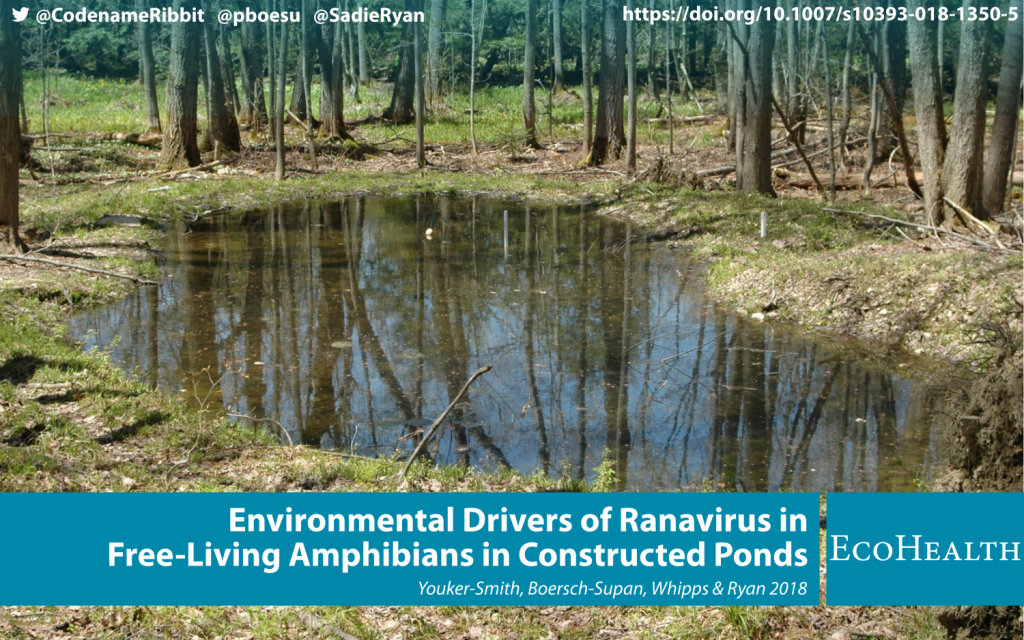 GAINESVILLE, FL – Amidst global amphibian population collapses, ranavirus causes up to 90% mortality in amphibians, undermining conservation efforts and wetland. restoration projects. In a recent study University of Florida Medical Geography researchers identified important variables to measure in assessments of ranaviral infection risk in newly constructed ponds which are important components of wetland restoration. Considering these variables can better inform the construction of artificial ponds for amphibian conservation.
GAINESVILLE, FL – Amidst global amphibian population collapses, ranavirus causes up to 90% mortality in amphibians, undermining conservation efforts and wetland. restoration projects. In a recent study University of Florida Medical Geography researchers identified important variables to measure in assessments of ranaviral infection risk in newly constructed ponds which are important components of wetland restoration. Considering these variables can better inform the construction of artificial ponds for amphibian conservation.
Frogs, salamanders, and other amphibians are facing population declines and extinctions worldwide. Habitat destruction is the main cause of these declines, closely followed by disease. As a result, amphibian populations are declining even in protected and restored habitats. Over the past 100 years, the landscape of upstate New York has reforested from farmland. Although forests have regrown, the original ponds present in the landscape have not returned. Conservation efforts directed at reestablishing endangered frog populations largely depend on the construction of artificial ponds.
The study, led by Ms. Tess Youker-Smith from the State University of New York College of Environmental Science and Forestry (SUNY-ESF), examined the prevalence of of the Frog virus 3 variety of ranavirus among wood frogs and green frogs in artificially constructed ponds in central New York’s Heiberg Forest, a former location of intensive agriculture, which has seen forest regrowth after the farms were abandoned. In 2010 SUNY-ESF constructed the ponds to create breeding habitat as part of an amphibian conservation effort. Field assays found that cool ponds, without much zooplankton, and with lots of froglets ready to metamorphose, had the highest ranavirus prevalence rate.
“This is another case where geography matters,” said senior author Dr. Sadie Ryan. “When we take things from the lab to the field, we often find our predictions challenged, and sometimes we find entirely new things.”
“It’s very exciting This is the first time we’ve seen zooplankton playing an important role in mitigating ranavirus infection in the wild,” said Dr. Philipp Boersch-Supan, who participated on the project while a postdoctoral researcher at the University of Florida. “It appears that the grazing zooplankton remove or inactivate the virus in the ponds.”
The findings have been published in a paper titled Environmental Drivers of Ranavirus in Free-Living Amphibians in Constructed Ponds in the journal EcoHealth.
The study was part of a collaboration between UF’s Dr. Sadie Ryan and Dr. Philipp Boersh-Supan, and researchers from the State University of New York College of Environmental Science and Forestry (SUNY-ESF).